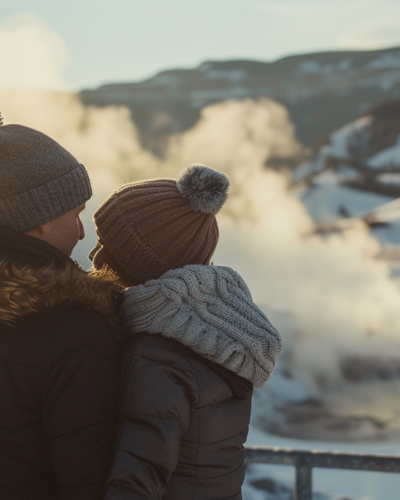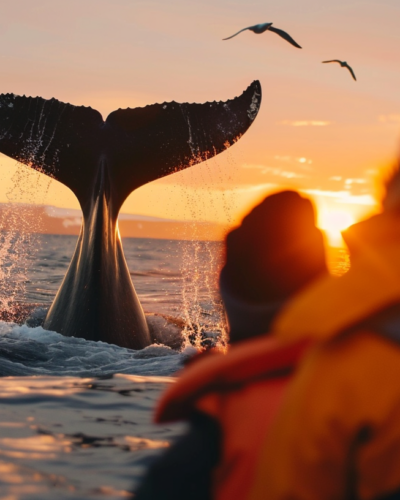One should never be under-prepared when visiting the Land Down Under. That’s why this City Knows compiled a quick guide on things to know before you go to the Australian Outback.
Before you don your wide-brimmed hat and venture into the heart and heat of Australia, there are staggering things to know before you go to the Australian Outback:. After all, this vast, untamed wilderness is 22 times larger than the UK, embracing 10 deserts, including stretches of sub-tropical savanna, and the largest expanse of temperate woodland on our planet.
Without a doubt, such sprawling diversity offers more than just a backdrop. Indeed, the famous Outback is a playground for the intrepid, a canvas of nature’s raw beauty, and a true testament to the sheer scale of earth’s landscapes.
With that said, let’s jump into the essential things to know before exploring this area of Australia.
Planning Your Visit to the Australian Outback
Embarking on an adventure to the Australian Outback requires savvy planning and a spirit of adventure.
Here are the essential things to know before you go to the Australian Outback to ensure your journey is as breathtaking as the landscapes you’re about to explore:
When to Go and How Much to Bring
For us, the best time to visit the Outback is during the cooler months of May to September, when the days are mild and the nights are cool. This timing avoids the extreme heat of the summer months, making outdoor activities more enjoyable. However, it is worth noting that some parts of the Outback, such as the Kimberley region in Western Australia, are best visited during the “shoulder seasons” of either April-May or September-October, as the wet season can make travel difficult during the peak dry season.
When budgeting for an Outback adventure, your ledger can vary widely. Do know that camping and caravan parks offer affordable accommodation, while guided tours can add on a few dollars but will provide more insightful explorations of remote areas. With that, allocating funds for fuel is always crucial for those planning road trips, as distances between sites can be pretty distant.
Where to Stay
Finding a place to rest your head in the Outback can be an adventure in itself, with options ranging from rustic to refined:
- Studio Five in Alice Springs provides a cozy base for exploring the Red Centre, offering easy access to local attractions.
- BIG4 Breeze Holiday Parks Resort In Cossack is perfect for families and adventurers looking to explore Katherine Gorge and its surroundings.
- Florence Bungalow in Rum Jungle offers a tranquil retreat near Litchfield National Park, ideal for nature lovers.
How to Get Around
In the expansive Australian Outback, having your own vehicle is often the best way to explore. Renting a 4WD allows you to navigate the rugged terrain and remote areas safely.
Do note, however, that not all roads in the Outback are suitable for 4WD vehicles, and some may require a high-clearance 2WD vehicle instead. It is essential to research the specific conditions and requirements of the roads you plan to travel on before setting out.
For those venturing into particularly isolated regions, carrying extra fuel, water, and emergency supplies is essential. Apps like HEMA Maps are likewise invaluable for off-road navigation, offering detailed maps and location tracking even without cell service.
Culture and Interaction in Australia
The Australian Outback is not just a place of natural wonders but also a cultural tapestry rich with indigenous heritage and outback pioneer spirit. Understanding the things to know before you go to the Australian Outback enriches your travel experience immeasurably.
Local Customs and Etiquette
Respect for the land and its Indigenous peoples and cultures is naturally paramount. When visiting sacred sites, always follow local guidance and restrictions. Greetings in the Outback are typically informal, with a simple “G’day” or “How ya going?” sufficing. But in remote communities, it’s also common to wave to passing vehicles on country roads— a small gesture of outback camaraderie.
Tipping is not customary in Australia, but for exceptional service, rounding up or offering a small extra amount will be appreciated. That’s because tipping is more common in major cities and tourist areas, but may also be expected in upscale restaurants and bars wherever you are.
Additionally, some tour operators and guides may also rely on tips as a significant portion of their income so do be generous if you can for jobs well done.
Language Tips
As many all know, English is the language spoken throughout Australia. However, the Outback has its own lingo and slang that can be charming and bewildering in equal measure. Learning a few local terms enhances your interaction with locals and shows an appreciation for Australian culture. Still, we’re not saying a translation app is necessary, but a guide to Aussie slang might just help you decipher conversations in the local pubs and shops so you’re never left out of those insider jokes and convos.
Exploring & Experiencing the Australian Outback
Venturing into the heart of Australia’s vast wilderness means engaging with both the rugged landscapes and the rich cultural tapestry of the Outback.
Here are more crucial things to know before you go to the Australian Outback to fully embrace this unique adventure:
Must-Visit Attractions
Uluru (Ayers Rock) is an iconic symbol of the Outback, revered by Indigenous peoples and admired by travelers for its spiritual and visual majesty. Equally compelling, the Olgas (Kata Tjuta) offer a mesmerizing walking experience through ancient, towering rock formations. Of course, don’t miss the opportunity to explore the lesser-known Kings Canyon for breathtaking views and serene walks within Watarrka National Park. These natural wonders encapsulate the Outback’s timeless allure.
For an immersive experience in the Outback’s natural beauty, the Larapinta Trail also offers one of the most spectacular trekking experiences in Australia. Stretching over 223 kilometers through the West MacDonnell Ranges, this trail provides hikers with breathtaking scenery, from ancient landscapes and remote gorges to sacred Aboriginal sites.
Another hidden gem is the Coober Pedy, the world’s opal capital, where visitors can explore underground homes, churches, and mines that prove to be some of the most secluded places on Earth.
For less-crowded areas, the Pinnacles in WA, the Flinders Ranges in SA, and the Warrumbungle National Park in NSW are all worth considering.
Food and Drink
Outback cuisine reflects its rugged environment, with dishes like bush tucker incorporating flavorful bursts of its native ingredients. For a taste of more local meat flavors, try kangaroo, emu, or camel, available in specialty restaurants throughout the region. Damper, a traditional soda bread, is another must-try campfire treat. While dining options in remote areas can be limited, towns like Alice Springs offer a variety of eateries, including those catering to specific dietary needs.
Local Experiences
A guided tour to learn about Aboriginal culture and history is definitely an enriching experience. It offers you ample insights into the land’s original stewards so you can better appreciate the land and the cultures that molded them. Stargazing under the clear Outback sky will also reveal the southern hemisphere’s celestial wonders. Plus, adventure seekers can embark on a camel trek through the desert.
With that, do expect that experiences vary in cost, but a cultural tour can start from an easy $100, and still provide invaluable perspectives on this ancient land.
Staying Safe & Healthy in the Australian Outback
In the remote Outback, preparation is always key.
Here are some more things to know before you go to the Australian Outback:
- With the hot sun on your back most of the time, it’s always best to travel with plenty of water, sun protection, and a first-aid kit.
- It goes without saying that, when in Australia, you should always be mindful of wildlife and stay on designated paths.
- No special vaccinations are needed here, so far, but do ensure your routine shots are current.
- Access to medical care can be limited in remote areas, so travel insurance with medical evacuation coverage is highly recommended.
- Some remote areas of the Outback may not have reliable cell service or access to medical facilities, making evacuation difficult or impossible in certain circumstances. Do your part and research the specific risks and challenges of the areas you plan to visit so you can take appropriate precautions.
Read up on More Things to Know Before You Go to the Australian Outback with This City Knows
Embrace the raw beauty and untold stories of the Australian Outback, where every landscape tells a tale of time immemorial and every star in the night sky guides you to another adventure. This compilation of things to know before you go to the Australian Outback aims to prepare you for an exploration unlike any other.
With This City Knows, your journey through the Outback becomes more than travel; it’s a voyage into the heart of Australia’s soul. Let us guide you through this land of extremes, from its ancient rocks to the boundless horizons.
Plan your travels with us and step into the vast, open mystery of the Outback!











